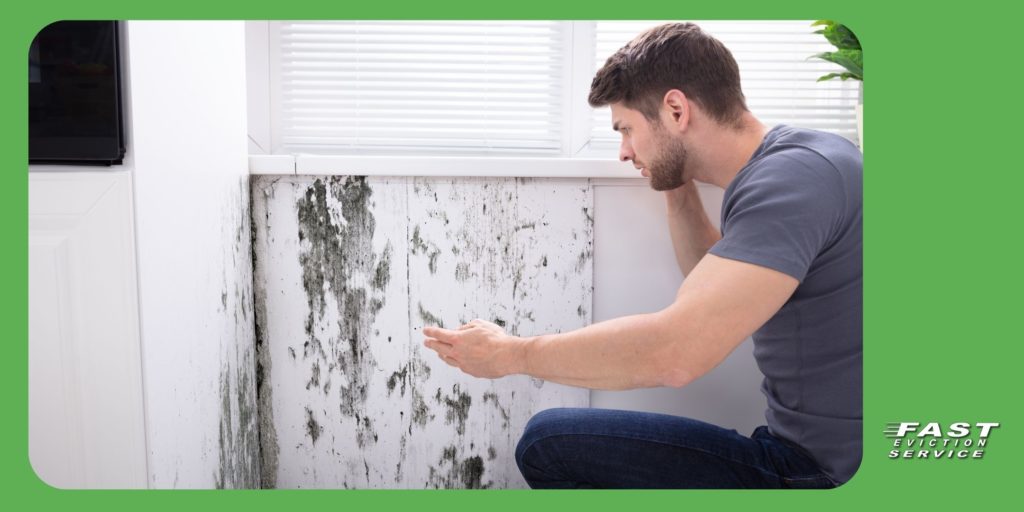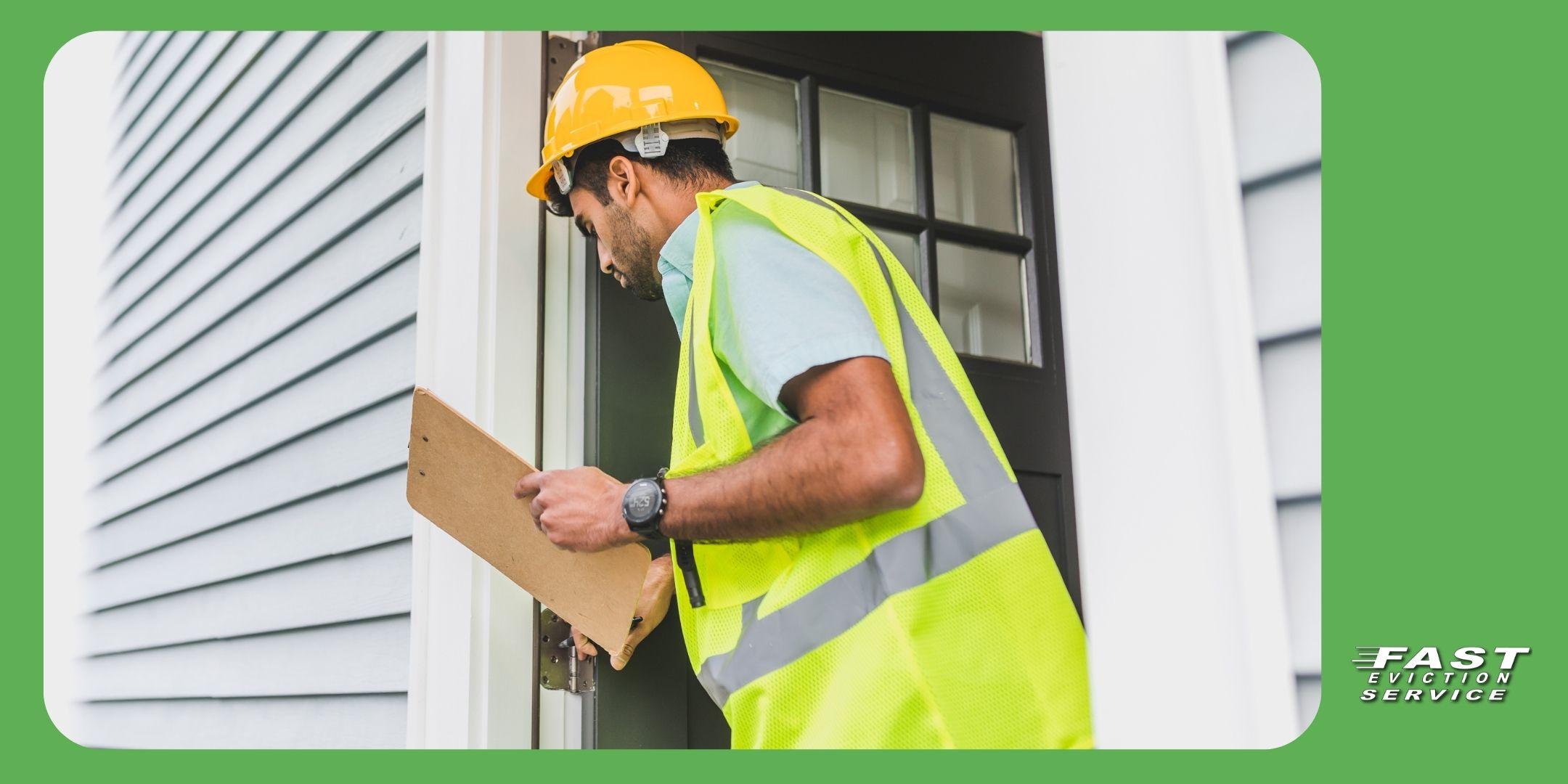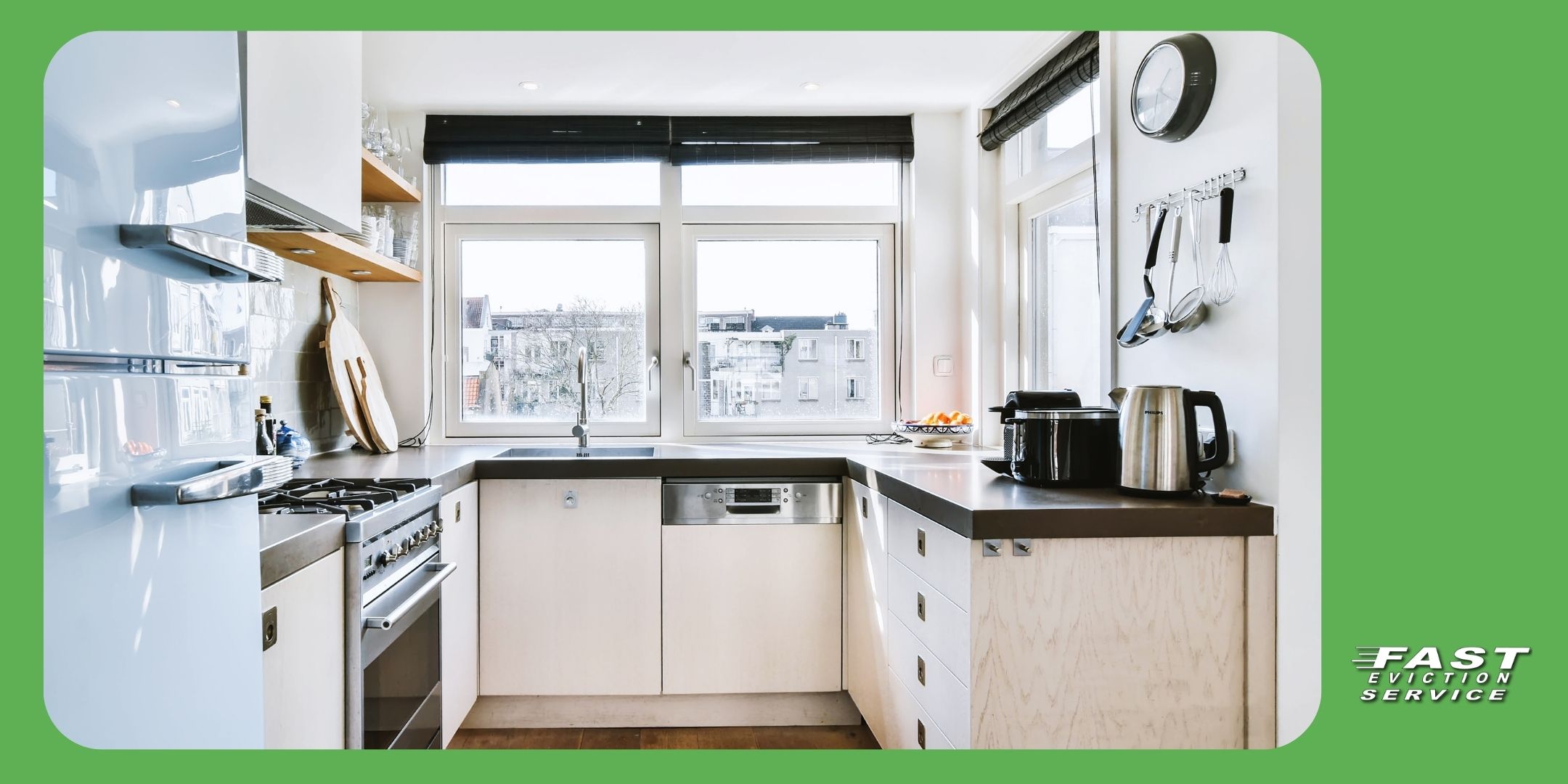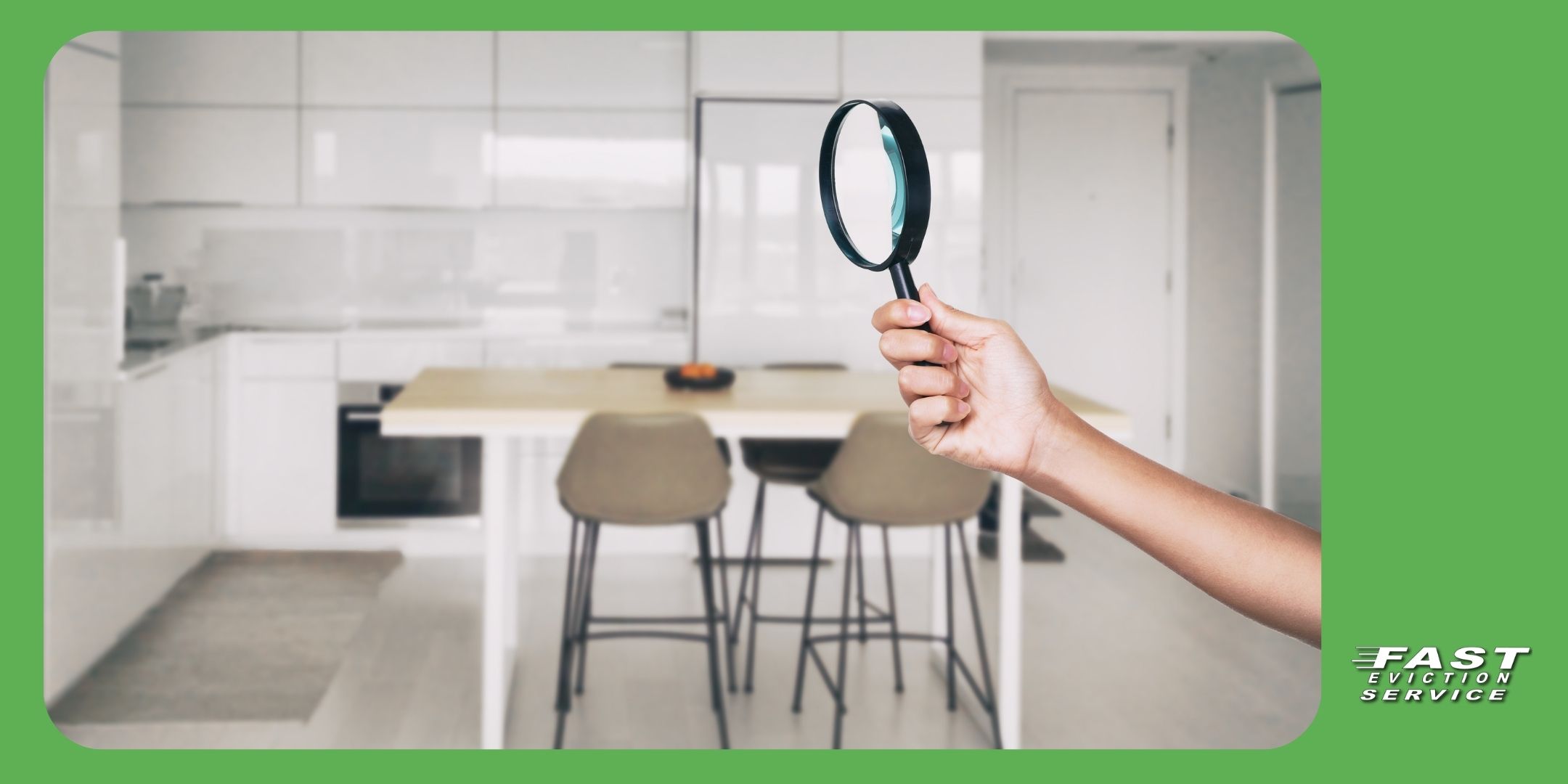Updated 10/29/24
Mold in a rental property isn’t just an eyesore; it can cause structural damage and health issues if left untreated. For landlords, addressing mold quickly and thoroughly is crucial, both for maintaining the property’s integrity and for ensuring tenant satisfaction. This article covers practical steps to help landlords understand how to get rid of mold, encourage tenants to help prevent it, and navigate potential consequences if mold is neglected.

Table of Contents
- Mold in Rental Property
- Tips to Prevent Mold in Rental Properties
- How to Get Rid of Mold in Rental Properties
- Consequences of Ignoring Mold
- Frequently Asked Questions
Mold in Rental Property
Mold can become a serious problem in rental properties, especially in high-humidity areas or poorly ventilated spaces. Mold spores are present indoors and outdoors, and under the right conditions—like moisture and darkness—they can spread quickly. Tenants and landlords share a role in preventing mold from becoming a larger issue, as it often starts in areas like bathrooms, kitchens, basements, and attics. Educating tenants and addressing issues swiftly can help landlords tackle mold before it escalates.
Tips to Prevent Mold in Rental Properties
Landlords can encourage tenants to adopt habits that minimize the chance of mold growth. Prevention is often easier and less costly than remediation, so open communication and setting clear expectations can go a long way.
Encourage tenants to ventilate their spaces by opening windows, using exhaust fans in bathrooms and kitchens, and avoiding drying clothes indoors whenever possible. Remind tenants to report any water leaks, no matter how minor, because even a small drip can eventually lead to significant mold issues if ignored. You might even consider adding a clause in the lease about reporting moisture issues promptly. Regular property inspections can also help you catch issues early. During these inspections, look for signs of leaks, water stains, or any visible mold, especially in vulnerable areas.
Another important preventive measure is maintaining a stable indoor humidity level. Mold thrives when indoor humidity is above 60%, so landlords may suggest that tenants use dehumidifiers, especially in damp or humid regions. Many landlords provide inexpensive dehumidifiers or advise on maintaining their existing HVAC systems, as these can regulate humidity.
How to Get Rid of Mold in Rental Properties
If mold appears, acting quickly to remove it is essential. The first step is assessing the extent of the mold growth. Small mold spots (under 10 square feet) can often be handled with household cleaning solutions. For these cases, landlords can instruct tenants to use a mix of water and detergent or a specific mold-killing cleaner. Mold in hard-to-reach areas or larger growths typically requires a professional mold remediation company to handle it safely and thoroughly.
When cleaning minor mold patches yourself, be sure to wear gloves, goggles, and a mask to prevent inhaling any mold spores. Use a scrub brush and cleaning solution to remove the mold, then thoroughly dry the area. Simply cleaning mold off won’t solve the issue if the source of moisture isn’t addressed, so be sure to fix any underlying problems, such as leaks or poor ventilation, immediately after cleaning.
Professional mold remediation services can be essential if the mold problem is extensive, recurrent, or has penetrated porous materials like drywall, carpet, or insulation. Professionals not only clean the visible mold but also assess and address underlying issues, including moisture control and ventilation improvements. The cost of professional remediation may seem high initially, but neglecting mold can lead to much higher expenses and legal concerns.
Consequences of Ignoring Mold
Ignoring mold in a rental property can have significant legal, financial, and health consequences. Mold is known to cause respiratory issues, skin irritation, and other health problems, especially for children, the elderly, and individuals with compromised immune systems. If tenants develop health problems linked to mold exposure, landlords may face liability issues, which could lead to lawsuits and substantial financial consequences.
In addition to tenant health risks, untreated mold can damage a property’s structure. Mold can deteriorate walls, ceilings, and floors, which may require costly repairs or replacement. Mold growth can also impact a property’s value, making it harder to rent out or sell in the future.
Legal obligations around mold vary, so check local and state laws to ensure compliance. Many regions require landlords to maintain a habitable living environment, which includes addressing moisture issues that could lead to mold. By prioritizing mold prevention and removal, landlords protect not only their properties but also their reputation as responsible property owners.
Landlords must take mold seriously, as it thrives in warm, damp places like basements and attics with poor ventilation. Mold can grow quickly and isn’t limited to wet climates—it can happen anywhere due to issues like spills or faulty plumbing.
If you manage a rental property in California, dealing with mold can lead to expensive cleanup, repairs, and potential lawsuits from tenants who believe it caused health problems. Keep reading to understand landlord responsibilities and tenant rights regarding mold in California rentals.
What Happens if I Don’t Address Issues?
In California, tenants dealing with mold issues often opt for two legal approaches. The first is rent withholding, where tenants stop paying rent, arguing that the mold has made their place unlivable. It’s essential to note that landlords in California must ensure habitable living conditions, regardless of lease terms. The second strategy, called repair and deduct, allows tenants to handle mold cleanup independently and deduct the expenses from their rent.
Landlords Liability Regarding Mold in California
There’s currently no federal law addressing a landlord’s responsibilities regarding mold. In California, aside from disclosure requirements, there are no specific California mold laws about a landlord’s duties for mold prevention and cleanup. In San Francisco, however, mold is considered a “public health nuisance,” giving tenants the right to sue landlords for violating city nuisance laws if they don’t remove visible mold inside buildings. California tenants who believe they’ve been harmed by high mold concentrations can seek damages from their landlord in court. If a court finds the landlord negligently caused or allowed the mold problem, they may be responsible for harm caused.
Mold Disclosure Requirement in California
In California, if you’re selling a residential building with up to four units, you must disclose in writing any known hazardous conditions, including mold (Cal. Civ. Code §§ 1102-1102.17).
For landlords, state law mandates providing tenants with a written disclosure, before signing a rental agreement, if they know or have reason to believe that mold exceeds safety limits or poses a health risk (Cal. Health & Safety Code § 26147). Even though permissible exposure limits can be established, the health department has determined it’s not practical to do so.
In a statement from September 2011, the department emphasized that the mere presence of water damage, visible mold, or mold odor is considered a health threat. Unlike lead paint, federal law doesn’t require landlords to disclose mold issues. Apart from legal requirements,
Security Deposit Deductions for Mold Issues
If you (landlord) suspect that a departing tenant is responsible for a mold issue in an apartment or rental unit beyond normal wear and tear, you may consider deducting the cleaning cost from their security deposit.
In California, landlords have the legal authority to do this as long as they provide the tenant with a written breakdown of the mold damage expenses, along with any other claimed damages, within 21 days of the lease termination. If the deducted amount is less than the security deposit, the landlord must return the remaining deposit to the tenant, along with written documentation detailing the deductions (Cal. Civ. Code § 1950.5(g)(1) (2022)).
Frequently Asked Questions
What is the best way to prevent mold in rental properties?
Encourage tenants to ventilate areas prone to moisture, such as bathrooms and kitchens. Installing exhaust fans, repairing leaks immediately, and keeping humidity levels below 60% are effective ways to prevent mold.
Is it the landlord’s responsibility to remove mold?
Yes, landlords are generally responsible for maintaining a safe, habitable environment, which includes addressing moisture problems and mold. However, tenants must also report issues promptly.
How can landlords help tenants prevent mold?
Landlords can provide dehumidifiers, ensure that HVAC systems are in good working order, and educate tenants on the importance of ventilation and timely leak reporting.



